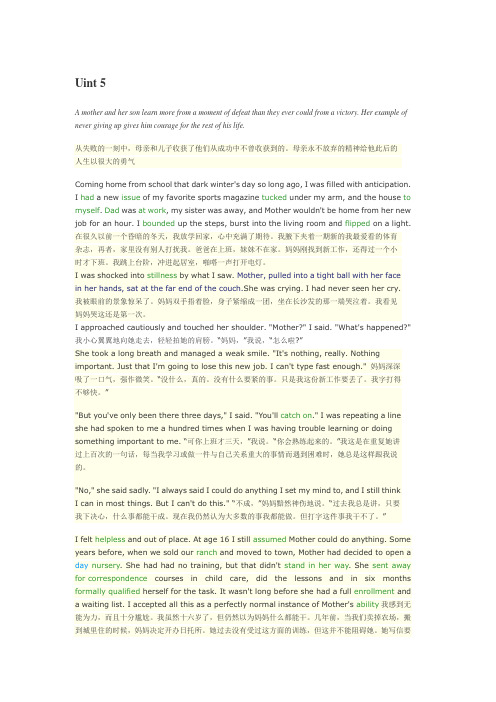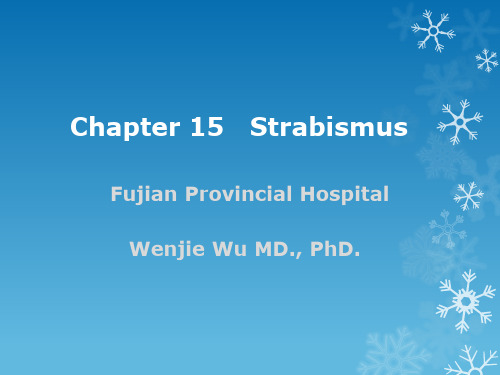MOTOR IMAGERY ABILITY IN NORMAL YOUNG AND AGING AD
- 格式:ppt
- 大小:1.17 MB
- 文档页数:36

难治性与非难治性抑郁症患者感觉门控P50的对比研究查勇;唐娅娟;刘萍霞【摘要】目的探讨难治性与非难治性抑郁症患者感觉门控P50的电生理机制差异. 方法采用配对听觉条件/测试刺激范式,对22例难治抑郁症患者(难治组)、26例非难治性抑郁症患者(非难治组)、25名健康被试(对照组)进行事件相关电位P50测定,测量其P50的潜伏期、波幅. 结果①与对照组相比,非难治组的条件刺激波(S1-P50)、测试刺激波(S2-P50)潜伏期均差异不显著(P>0.05);难治组S1-P50、S2-P50潜伏期显著延迟(P<0.05).②与对照组相比,非难治组S1-P50、S2-P50波幅显著降低(P<0.05),难治组S1-P50、S2-P50波幅均显著降低(P<0.05).与非难治组相比,难治组S1-P50、S2-P50波幅均显著降低(P<0.05).③与对照组相比,非难治组S2/S1波幅比值升高,但差异不显著(P>0.05),难治组显著升高(0.58±0.18vs1.24±0.31,P<0.05). 结论难治抑郁症患者感觉门控抑制机制受损,而非难治性抑郁症患者其机制自身未见异常.提示P50受损指标可能是难治性抑郁患者的早期生物学标记.【期刊名称】《山西医科大学学报》【年(卷),期】2014(045)010【总页数】4页(P957-960)【关键词】难治性抑郁症;事件相关电位;感觉门控P50【作者】查勇;唐娅娟;刘萍霞【作者单位】陕西省宝鸡市康复医院门诊部,宝鸡721001;陕西省宝鸡市康复医院门诊部,宝鸡721001;陕西省宝鸡市康复医院门诊部,宝鸡721001【正文语种】中文【中图分类】R749难治性抑郁症是指如果已经使用两种不同种类的足剂量、足疗程的抗抑郁药物治疗且患者依从性好,但患者症状恢复不明显或轻微改善的抑郁症[1]。
感觉门控(sensory gating,SG)是指大脑抑制无关的感觉信息流输入的功能。

・专题・脑卒中后肩2手综合征的综合康复赵长龙[摘要]目的探讨康复综合干预对脑卒中后肩2手综合征的治疗效果。
方法对181例脑卒中后并发肩2手综合征患者分为综合康复治疗组(观察组)96例和对照组85例,两组均行常规康复训练,观察组还另外采用良肢位摆放、空气波压力治疗、冷水热水交并浸泡、运动想像等综合康复措施。
治疗4周后评定疗效。
结果观察组偏瘫侧肩痛、关节活动度、水肿等与治疗前比较有明显改善,与对照组比较有显著性差异(P<0105)。
结论综合治疗能提高脑卒中后肩2手综合征的康复治疗效果,有助于肩关节功能的恢复。
[关键词]肩2手综合征;脑卒中;康复E ffect of Comprehensive R ehabilitation on Shoulder H and Syndrome after Stroke Z HA O Chang2long.Department of Rehabilitation Medicine,B eichen T raditional Chinese Medicine Hos pital,Tianj in300400,ChinaAbstract:Objective To investigate the effect of the comprehensive rehabilitation on shoulder hand syndrome after stroke. Methods181patients with shoulder hand syndrome after stroke were divided into the comprehensive rehabilitation group(observed group,96cases)and control group(85cases).All the patients were treated with routine rehabilitation training,while those of the observed group accepted normal limbs in good position,air pressure,cold/warm water alternate dip in,motor imagery,etc.in addi2 tion.R esults The shoulder pain,range of motor,dropsy of the observed group obviously improved to that of the control group(P< 0105).Conclusion The comprehensive rehabilitation is more effective on shoulder hand syndrome after stroke.K ey w ords:shoulder hand syndrome;stroke;rehabilitation[中图分类号] R743.3[文献标识码] A[文章编号] 100629771(2008)0320224202[本文著录格式] 赵长龙.脑卒中后肩2手综合征的综合康复[J].中国康复理论与实践,2008,14(3):224—225.肩2手综合征(shoulder hand syndrome,SHS)是脑卒中偏瘫患者常见的并发症,主要表现有患侧上肢水肿、肩手疼痛、肩关节脱位及关节活动受限等,常发生在发病后1~3个月,发生率1215%~70%[1],是严重影响瘫痪上肢功能恢复的原因之一。

Uint 5A mother and her son learn more from a moment of defeat than they ever could from a victory. Her example of never giving up gives him courage for the rest of his life.从失败的一刻中,母亲和儿子收获了他们从成功中不曾收获到的。
母亲永不放弃的精神给他此后的人生以很大的勇气Coming home from school that dark winter's day so long ago, I was filled with anticipation.I had a new issue of my favorite sports magazine tucked under my arm, and the house to myself. Dad was at work, my sister was away, and Mother wouldn't be home from her new job for an hour. I bounded up the steps, burst into the living room and flipped on a light. 在很久以前一个昏暗的冬天,我放学回家,心中充满了期待。
我腋下夹着一期新的我最爱看的体育杂志,再者,家里没有别人打扰我。
爸爸在上班,妹妹不在家。
妈妈刚找到新工作,还得过一个小时才下班。
我跳上台阶,冲进起居室,啪嗒一声打开电灯。
I was shocked into stillness by what I saw. Mother, pulled into a tight ball with her facein her hands, sat at the far end of the couch.She was crying. I had never seen her cry.我被眼前的景象惊呆了。


个性化参赛方案与发射前行为程序对高水平射箭运动员竞赛策略、赛前心理状态及竞赛操作绩效的影响赵国明;魏柳青;赵小坤;李坤【摘要】目的:采取个性化发射前行为程序和参赛方案为干预手段,旨在帮助运动员建立稳定的发射前心理、行为习惯,提高竞赛中技术操作的稳定性和准确性.方法:将18名射箭运动员(平均年龄为20.6±2.2岁)配对分为实验组与对照组,实验组施加参赛方案和行为程序干预,对照组施加同步无关授课.评价采用干预前、后测设计,内容包括赛前心理状态和操作绩效.结果:1)干预后实验组除情绪控制维度之外,在竞赛策略总分及其他维度上的提高相对于对照组均呈现了显著性差异;实验组赛前的特质自信和状态自信的提升均显著高于对照组;实验组赛前的认知焦虑和躯体焦虑的降低均显著高于对照组;2)实验组在12支箭的总环数、箭支落点半径误差、失败尝试发射频次的积极变化与对照组相比,均存在显著性差异;3)以操作绩效增量为因变量,赛前心理状态增量为自变量的回归分析发现,状态自信增量对总环数增量的预测作用显著;自动化、消极思维、放松、情绪控制增量对落点半径误差增量的预测作用显著;躯体焦虑增量对失败尝试发射频次增量的预测作用显著.结论:1)参赛方案与行为程序综合干预可有效提高射箭运动员参赛策略水平;2)参赛方案与行为程序综合干预可有效降低射箭运动员赛前焦虑并提升自信;3)参赛方案与行为程序综合干预可明显提高射箭运动员的竞赛条件下发射的准确性和稳定性;4)运动员赛前状态自信、躯体焦虑、动作自动化、消极思维、放松、情绪控制等心理状态对竞赛操作绩效有预测作用.【期刊名称】《体育科学》【年(卷),期】2013(033)012【总页数】10页(P39-48)【关键词】参赛方案;发射前行为程序;竞赛策略;赛前心理状态;操作绩效;稳定性【作者】赵国明;魏柳青;赵小坤;李坤【作者单位】北京市体育科学研究所,北京100075;河南省体育科学研究所,郑州450044;唐山学院体育部,唐山063000;中央财经大学体育经济管理学院,北京100081【正文语种】中文【中图分类】G8871 引言射箭作为封闭性技能项目,运动员的操作表现受其心理状态的直接影响。

脑卒中偏瘫上肢功能障碍康复治疗研究进展梁天佳【期刊名称】《广西医科大学学报》【年(卷),期】2018(035)007【总页数】3页(P1026-1028)【关键词】脑卒中;偏瘫;上肢康复;手功能康复【作者】梁天佳【作者单位】广西医科大学第二附属医院康复医学科,南宁530007【正文语种】中文【中图分类】R473.74在脑卒中出现肢体功能障碍的患者中,80%患有上肢功能障碍。
而在患有上肢功能障碍患者中,最终只有30%的患者能够实现上肢功能恢复[1],只有约12%的患者手功能得到较好的恢复,这对脑卒中患者的生活质量和社会参与度有着深远的影响[2]。
手功能康复是一个复杂的系统工程,已成为康复治疗中的难点和重点,目前脑卒中偏瘫上肢和手功能康复常用的治疗措施可分为中枢神经干预和外周神经干预两大类。
随着科技的进步和康复医学研究的深入,涌现出一些脑卒中手功能康复的新方法和新理念,本文就脑卒中后上肢和手功能障碍的中枢和外周干预康复治疗方面的进展综述如下。
1 中枢干预1.1 镜像疗法 Wang等[3]通过对脑卒中患者与健康受试者的对比研究发现,两者的脑区激活模式不太一致,但镜像错觉同样能导致观察手对侧脑区的激活。
丁力等[4]研究发现,通过改造传统成像设备,进行在视频引导下的多模态镜像疗法,拍摄健手影像并进行数据处理,将翻转的影像反馈到患侧,形成视错觉,并进行规范、系统的训练,以更好地激活特定的脑功能区。
将此方法应用于慢性期脑卒中手功能障碍患者的康复治疗中,经过训练后患者的手部精细功能得到显著恢复,磁共振功能成像检查显示患者大脑运动皮质激活明显增强,进一步证实改良镜像疗法的有效性。
虽然镜像疗法在脑卒中偏瘫患者上肢运动功能障碍的的康复治疗中运用较广泛,但其具体操作方法、操作流程、动作分类等尚无统一标准,其作用机制尚有待于进一步明确。
1.2 运动想象疗法运动想象作为一种认知处理过程,无明显的肢体活动,而是让想象者在脑海中反复地想象特定的运动动作或运动场景,以此促进脑功能重组,从而提高肢体运动功能[5-7]。
2019年大学英语四级真题试卷及答案-CAL-FENGHAI-(2020YEAR-YICAI)_JINGBIAN2019年6月大学英语四级真题及答案(第一套)Part I Writing (25 minutes)(请于正式开考后半小时内完成该部分,之后将进行听力考试) Directions:For this part, you are allowed 30 minutes to write an advertisement on your campus website to sell a computer you used at college. Your advertisement may include its brand,specifications/features, condition and price, and your contact information.You should write at least 120 words but no more than 180 words.Part II Listening Comprehension (30 minutes)Section ADirections:In this section, you will hear three news reports. Atthe end of each news report, you will hear two or three questions. Both the news report and questions will be spoken only once. After you hear questions, you must choose the best answer from the four choices marked A), B), C) and D). Then mark the corresponding letter on Answer Sheet 1 with a single line through the centre.注意:此部分试题请在答题卡1上作答。
George LakoffThe Theory of Cognitive ModelsLakoff's Women, Fire, and Dangerous Things is a treasure trove of linguistic examples and a carefully developed model of cognition argued on the basis of semantics. His experientialism places the human act of cognition in the center; his brilliantly presented result is that cognition is vitally dependent on metaphor, which he defines as a mapping of conceptual structures from one domain onto another--a result of particular relevance to literature.On the Relativity of Knowledge and Truth"Knowledge, like truth, is relative to understanding. Our folk view of knowledge as being absolute comes from the same source as our folk view that truth is absolute, which is the folk theory that there is only one way to understand a situation. When that folk theory fails, and we have multiple ways of understanding, or 'framing,' a situation, then knowledge, like truth, becomes relative to that understanding. Likewise, when our knowledge is stable and secure, knowledge based on that understanding is stable and secure.Is such knowledge 'real knowledge'? Well, it's as real as our knowledge ever gets--real enough for all but the most seasoned skeptics." (300)On the different kinds of cognitive framesLakoff argues that experience is made possible and structured by preconceptual structures-- "directly meaningful concepts" roughly the same for all human beings that thus provide "certain fixed points in the objective evaluation of situations". He divides them into basic-level structures and image-schema structures, and acknowledges there may be other kinds. Basic-level structures arise "as a result of our capacities for gestalt perception, mental imagery, and motor movement" and manifest as basic-level categories such as hunger and pain, water, wood, and stone, people and cats, and (perhaps more surprisingly) tables and houses (302). Image schemas are spatial mappings such as source-path-goal,center-periphery, and container. It is out of these basic cognitive tools that more complex cognitive models of reality are constructed:On literal and metaphorical meaningThe literal provides the building blocks of thought. "Cognitive models derive their fundamental meaningfulness directly from their ability to match up with preconceptual structure. Such direct matchings provide a basis for an account of truth and knowledge" (303). Since the matching is internal--from one concept or cognitive process to another--we do not run into the later Wittgenstein's problem of matching word to thing. The literal, however, cannot capture the order of all domains. "In domains where there is no clearly discernible preconceptual structure to our experience, we import such structure via metaphor. Metaphor provides us with a means of comprehending domains of experience that do not have a preconceptual structure of their own". Preconceptual structures are thus mapped from source domains onto target domains. This is a particularly elegant result, and fits loosely with facultytheory--although it is not clear that Lakoff himself would wish to make such an extension.Some examples of metaphors∙Life is a journey (the person is a traveler, purposes are destinations, means are routes, difficulties are obstacles,counselors are guides, achievements are landmarks, choices arecrossroads∙ A lifetime is a day, death is sleep; a lifetime is a year, death is winter∙Lif is a struggle, dying is losing a contest against an adversary ∙Life is a precious possession, time is a thief, death is a loss ∙Time is a thiefWhat is striking when one examines Lakoff's painstaking lists of metaphors is how completely immersed we are in them, and how our thinking is enabled by them. It is perhaps impossible to say many things literally: there are simply no appropriate conceptual primitives. How, for instance, do you speak of the high points in your life literally? The very narrative assumes the metaphorical mapping.A critique and appreciationLakoff's approach of developing a general model of cognition on the basis of semantics has certain inherent weaknesses, in spite of its spectacular results. It cannot be taken for granted that semanticcategories accurately represent cognitive domains--language may have access only to the output of other cognitive modules, and their domain-specificity may be partly elided by linguistic categories. For this reason, evidence for cognitive domains must be sought and demonstrated independently of language. However, semantics can be utilized as a way of generating hypotheses about domain-specificity, which can then be independently verified.The presence of cognitive domains also raises the question of how these came about. Lakoff assumes they flow out of our physical constitution and the nature of the world; a more precise way of speaking about this is evolutionary psychology. A consideration of the environment in which humans evolved would permit us to map the source domain onto a proper domain, and thus generate a more detailed list of properties and entailments. Such historical considerations would also allow us to provide principled answers to which domains do not have their own preconceptual structure: namely, domains that either did not exist in the ancestral environment (agriculture, most forms of technology, civilization) or domains that were not available or significant to survival (microbiology, quantum physics, chemistry).Moreover, Lakoff's notion of metaphor as a mapping from one cognitive domain to another as "one of the great imaginative triumphs of the human mind" has been echoed by the British paleo- anthropologist Steven Mithen (1996), who has suggested that the transition from Neanderthal man to Cro Magnon is marked precisely by the ability to "switch cognitive frames": the paleolithic blossoming in art may be correlated with the ability to think metaphorically.Lakoff's proposal on metaphor is a particularly pregnant one for literary studies-- not because ordinary speech is mainly literal (it clearly is not), but because literature is a deliberate forefronting of linguistic devices, a cultivation of special effects. Clarifying what is the source and proper domains of a metaphor promises to throw light on the way meaning is constructed in reading. As for cultural studies, Lakoff's work opens up for the possibility of tracing political and social patterns back to an underlying set of metaphors (see Lakoff and Johnson (1980), Brown (1988), and Boyer (1988)).It should also be noted that Leonard Talmy, whose early work clearly belonged to the Lakovian paradigm (see the next link), more recently has developed this approach explicitly in the direction of evolved cognitive structures (see Talmy (1995))./CogSci/Lakoff.html。
一、完成句子1. 对周围的一切保持好奇是件好事,因为好奇心是最好的老师。
It is good ____________ everything around you because curiosity is the best teacher. 2. She found that if she ______ ______ (concentrate) the ideas, not the single words, she could understand.她发现只要她专注于主要意思而不是单个单词,她就能理解。
二、完形填空文章大意:这是一篇说明文。
文章介绍对运动员来说精神的锻炼和身体的锻炼一样重要,为了更好的发挥,运动员可以运用想象来体验比赛的过程。
3. The psychological aspect of sports is often overlooked. Athletics is 90 percent_________ and 10 percent physical, and mindsets make a huge _________ in competitions. “The physical aspect of the sport can only take you _________,” said Olympic gold medal-winning gymnast Shannon Miller. “The mental aspect has to _________, especially when you’re talking about the best of the best. In the Olympic Games, everyone is talented. Everyone _________ hard. Everyone does the work. What _________ the gold medalists from the silver medalists is simply the mental game.” Many athletes have used the _________ of mental imagery, or visualization, to perform at their best. Research on the brain patterns of _________ found that the patterns activated by lifting heavy weights were activated _________ when they simply imagined lifting and some studies have suggested that mental __________ can be almost as effective as physical training.Mental imagery about the event __________ on many cognitive (认知的) processes in the brain: motor control, attention, perception, planning, and memory. So the__________ is getting trained for actual performance during visualisation. And it’s been found that mental practices can prepare your brain for success. __________ visualising is more than just thinking about an upcoming event. “During visualisation, the athlete incorporates (整合) all of his __________ into the experience.” sports psychologist Dr JoAnn Dahlkoetter wrote in a blog post on The Huffington Post__________ a speed skater she works with. “She feels her forefoot pushing off the track, she hears her skating splits, and she sees herself racing ahead of the competitors. She experiences all of the elements of her race, for example,before executing (完成) her performance.”1.A.emotional B.intelligent C.mental D.strategic2.A.difference B.importance C.improvement D.challenge3.A.so long B.so far C.so much D.so high4.A.turn on B.show off C.take up D.set off5.A.approves B.motivates C.disciplines D.trains6.A.breaks B.pushes C.determines D.distinguishes 7.A.treatment B.technique C.technology D.tradition 8.A.runners B.gymnasts C.weightlifters D.skaters9.A.regularly B.normally C.finally D.similarly10.A.connection B.practice C.performances D.directions 11.A.impacts B.comments C.insists D.reflects12.A.brain B.body C.attention D.memory13.A.Though B.Otherwise C.But D.Instead14.A.observations B.spirit C.determination D.senses 15.A.over B.for C.about D.with三、阅读选择(阅读理解)文章大意:本文是一篇说明文。